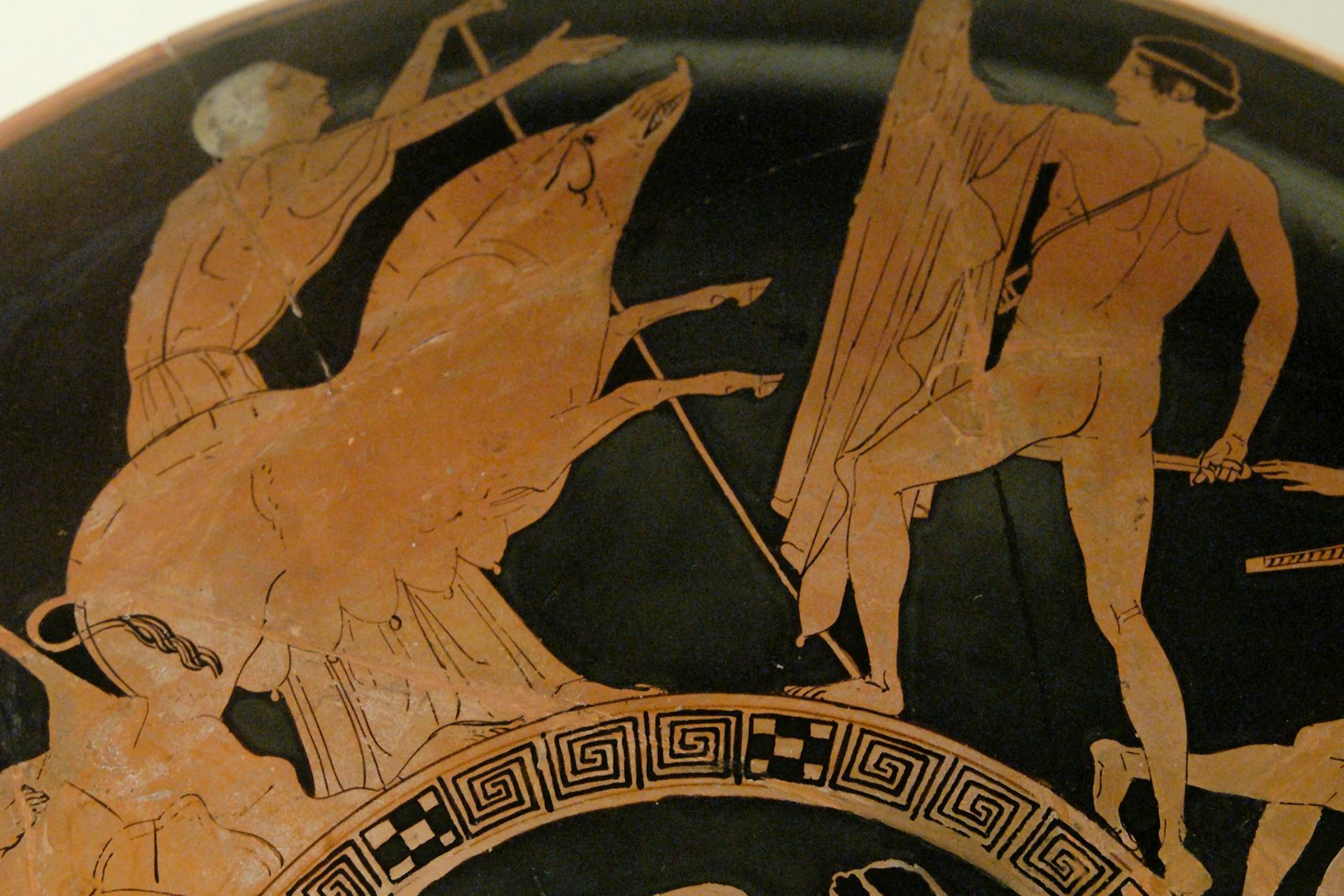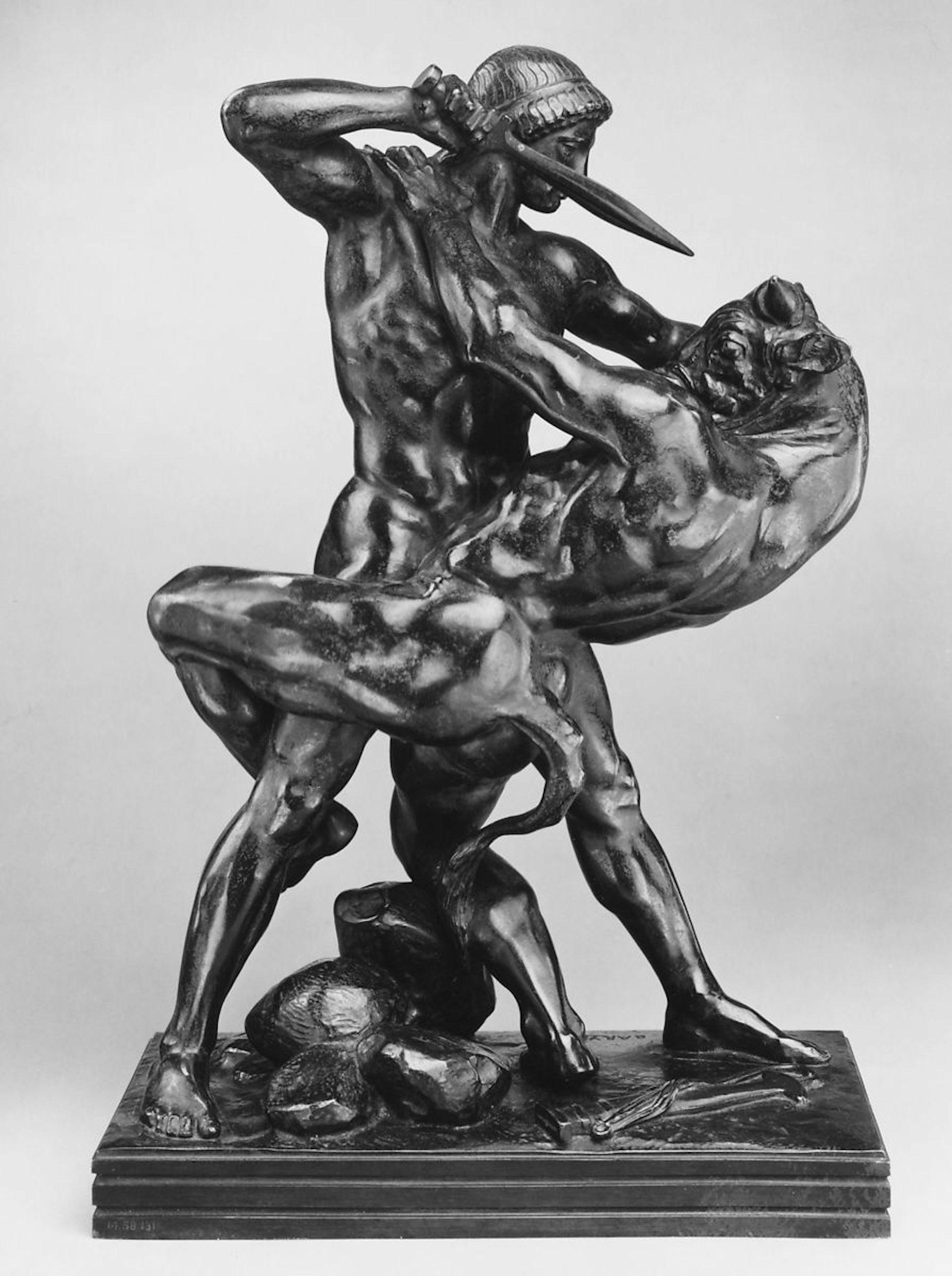Crommyonian Sow

Tondo of an Attic red-figure kylix (ca. 440–430 BCE) showing Theseus fighting the Crommyonian Sow
British Museum, London / Marie-Lan NguyenCC BY 2.5Etymology
The “Crommyonian Sow” (Greek Κρομμυωνία σῦς, translit. Krommyōnía sŷs) was so named because she lived near the town of Crommyon in the region of Corinthia.
Pronunciation
English
Greek
Crommyonian Sow Κρομμυωνία σῦς (Krommyōnía sŷs) Phonetic
IPA
[kroh-mi-OH-nee-uhn] /ˌkroʊ mɪˈoʊ ni ən/
Alternate Names
In some later sources, the Crommyonian Sow bore the name “Phaea” (Greek Φαιά, translit. Phaiá; also spelled Φαῖα/Phaîa[1]), meaning “gray.”[2]
Attributes
General
The Crommyonian Sow was a sow—a wild female pig—of exceptional size, strength, and ferocity.[3] The creature lived near Crommyon, a small town in the region of Corinthia on the Saronic Gulf (though it was originally part of the Megarid). This fearsome sow harassed the area, killing many people before finally being slain by Theseus.[4]

Theseus Slaying the Minotaur by Antoine-Louis Barye (1843)
The Metropolitan Museum of ArtPublic DomainIconography
The Crommyonian Sow was one of Theseus’ less important conquests, but she did occasionally appear in ancient art, especially in Athenian vase painting from the fifth century BCE. She was represented as a creature of prodigious size and usually shown in battle with Theseus. An old woman was often depicted with the sow, no doubt the owner of the terrible beast.[5]
Family
In the earliest traditions, the Crommyonian Sow was a fairly ordinary animal; but later accounts, perhaps hoping to build up her fearsomeness, seem to have embellished her pedigree. The mythographer Apollodorus, for example, reports a tradition in which the Crommyonian Sow was the child of the monsters Typhoeus and Echidna.[6] Another tradition, reported by the geographer Strabo, made the Crommyonian Sow the mother of the Calydonian Boar.[7]
Mythology
The Crommyonian Sow is best known as one of the foes Theseus faced on his journey to meet his father Aegeus, the king of Athens. These opponents (sometimes referred to as the “Six Labors of Theseus”) plagued the isthmus road—the narrow strip of land connecting the Peloponnese with the rest of mainland Greece. While traveling from his mother’s home in Troezen to his father’s kingdom in Athens, Theseus cleared the isthmus of the dangerous bandits and creatures that infested it.
The Crommyonian Sow was a monstrously strong and large creature, responsible for killing many people. In some traditions, it had been bred by an old woman named Phaea, who instilled in it a thirst for blood. In the end, Theseus fought and killed the beast.[8]
A rationalized variant of the myth of the Crommyonian Sow is recorded by Plutarch. According to this interpretation, the so-called Crommyonian Sow was not a real sow at all, but rather a female bandit from Crommyon named Phaea who had been nicknamed the “Crommyonian Sow” on account of her unfortunate hygiene.[9]